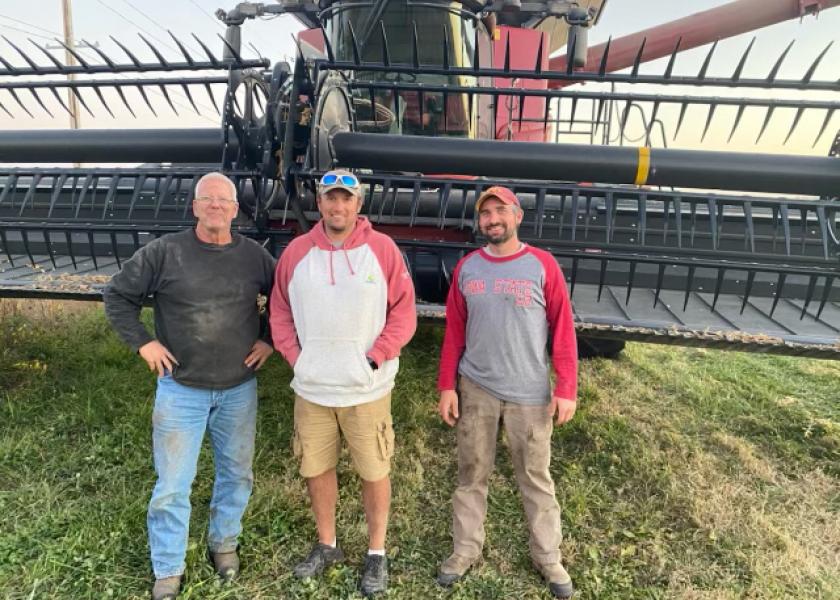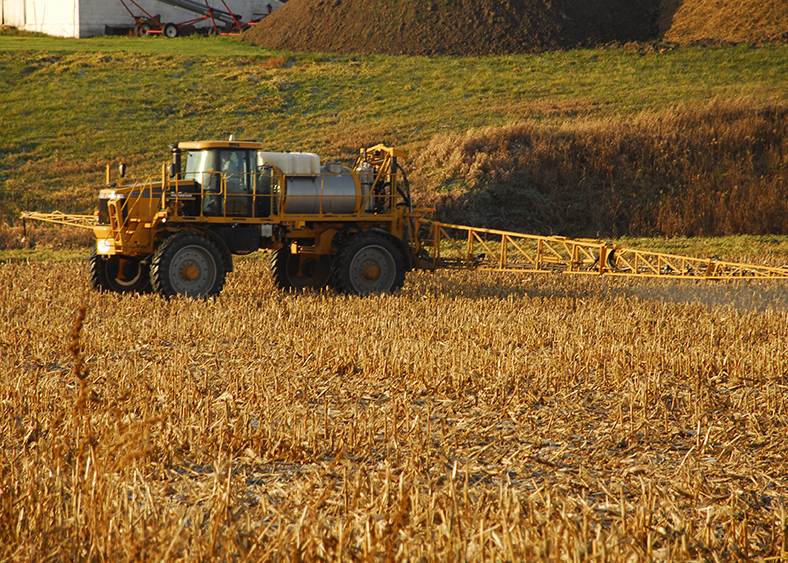From the Combine Seat: Weed Prevention Starts in the Fall

Use the fall season to get a head start on weed control for next spring
Weed control practices aren’t finished in the fall for Caleb Hamer, despite the completion of harvest. Instead, fall marks the start of his weed-prevention plan for the following spring, especially for his seed corn crop.
“We come in as quickly as we can behind the corn pickers at harvest and plant a cover crop, typically cereal rye,” says Hamer, who farms in northeast Iowa.
That’s been his go-to practice for the past five years. “We’re harvesting seed corn in early to mid-September, and that gives us a good long window with sunlight and heat to get a cover crop up and growing in the field,” says Hamer, who also grows soybean seed and commercial grade corn and soybeans.
The cereal rye quickly emerges and suppresses weeds, keeping them in check until Hamer comes back into fields with a pre-emerge herbicide application prior to planting. He then follows that with a post-applied herbicide that contains a residual product.
Hamer says weed control is critical to good seed corn growth and development, because it is unable to compete with tough broadleaves and grasses.
“With seed corn, you're not talking about real tall, vigorous hybrids with thick stalks. You're talking about kind of spindly looking inbreds for the most part that are getting crossed to create the hybrids that we all plant on a commercial scale,” he explains. “Sometimes these inbreds are not very big plants and you don't have as big or as thick of a canopy to help defend against weeds.”
Even so, the goal, he says is to get the seed corn crop up and canopied as quickly as possible.
“Ideally, we like to have overlapping residual herbicides in place to get us to early July before their efficacy runs out. By then, hopefully, we've established enough canopy that the plant can take over protecting itself by shading out any weeds.”
Ideal Time for Burndown Treatments
Hamer says because the cereal rye suppresses weeds adequately he hasn’t needed to make any fall burndown herbicide applications.

However, fall is an ideal time to control winter annual weeds, according to Marcelo Zimmer and Bill Johnson, Purdue University weed science Extension specialists. This is because the weeds are a lot smaller now, and fall weather tends to be consistently warmer and drier than during variable cool and wet springs.
Zimmer and Johnson say key winter annuals in the Midwest to target include marestail (horseweed), henbit, deadnettle, common chickweed, annual bluegrass, wild mustards, prickly lettuce and cheatgrass.
If labor permits, fall herbicide applications can be practical and cost-effective, adds Mark Loux, Ohio State University Extension weed specialist. He recommends starting with 2,4-D, and then adding another herbicide for more comprehensive control. Possibilities include glyphosate, dicamba, metribuzin and simazine. One caveat – avoid chemistries that would limit what crop you expect to plant the following spring.
Every Season is Different
Hamer reviews his weed-control success in each field each fall to determine any changes he wants to make the following season.
“We observe lots of seed corn fields throughout the season, and we take note of how the herbicide programs do and talk that over with our independent crop consultant,” Hamer says. “He's in our fields every 10 days or so throughout the growing season, and we get regular reports from him.”
Hamer also stays on top of new weeds moving into his area and new chemistries by talking with company agronomists. “We collaborate with all those resources at the end of the year. It’s something I’d encourage other growers to do, too. We ask what performed well and were there any major failures and discuss what changes we might want to make.”
He also evaluates any programs that are available to support his farming goals. Funding made available through a Cedar Rapids water quality initiative to clean up waterways is how he found out about using cereal rye to suppress weeds post-harvest.
As he looks to 2023, Hamer says he doesn’t currently have any plans to change his herbicide program. His goals for next year are to simply use the management practices and products that perform best in the field and communicate those plans to his neighbors.
“I’ve seen all these products get sprayed and be successful under the right conditions,” he says.







